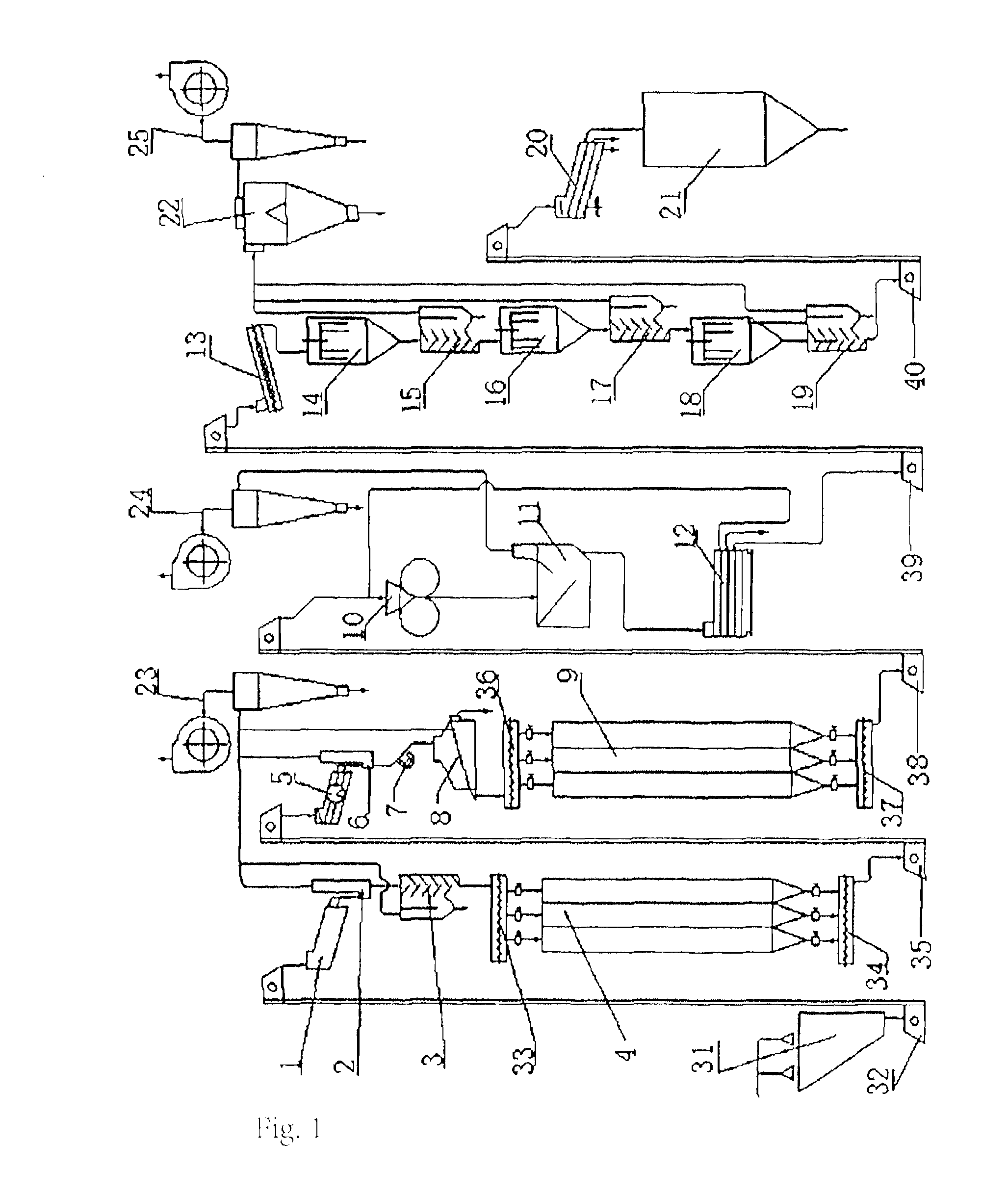Process and device for producing rice from paddy
a technology of processing and rice, which is applied in the field of paddy processing, can solve the problems of high energy consumption, high broken rice rate, and up to 25% to 40% broken rice rate, and achieve the effects of improving the debranning effect, high stripping rate of bran coating, and increasing the energy consumption during stirring
- Summary
- Abstract
- Description
- Claims
- Application Information
AI Technical Summary
Benefits of technology
Problems solved by technology
Method used
Image
Examples
example 1
[0022]A process for producing rice from paddy, the process flow thereof is pre-cleaning→winnowing→entering raw-paddy bin→re-cleaning→magnetic separation→de-stoning→entering cleaned paddy bin→husking→paddy-husk separation→paddy-brown rice separation→brown rice→dampening→first stirred debranning→winnowing→second stirred debranning→winnowing→third stirred debranning→winnowing→white rice grading→entering finished product bin. The dampening involves using a spray dampener to add water accounting for about 1.0% of the weight of the brown rice, with the water temperature about 35° C.; after the dampening, the brown rice is conveyed to the stage of stirred debranning within 10 minutes to be processed. During the stage of stirred debranning, the height of the brown rice is controlled to be 0.3-2 m.
[0023]A device for implementing the above process for producing rice from paddy (as shown in FIG. 1, where the flow chart can treat 100 tons of paddy per day), includes the following sequentially c...
PUM
 Login to View More
Login to View More Abstract
Description
Claims
Application Information
 Login to View More
Login to View More - R&D
- Intellectual Property
- Life Sciences
- Materials
- Tech Scout
- Unparalleled Data Quality
- Higher Quality Content
- 60% Fewer Hallucinations
Browse by: Latest US Patents, China's latest patents, Technical Efficacy Thesaurus, Application Domain, Technology Topic, Popular Technical Reports.
© 2025 PatSnap. All rights reserved.Legal|Privacy policy|Modern Slavery Act Transparency Statement|Sitemap|About US| Contact US: help@patsnap.com


